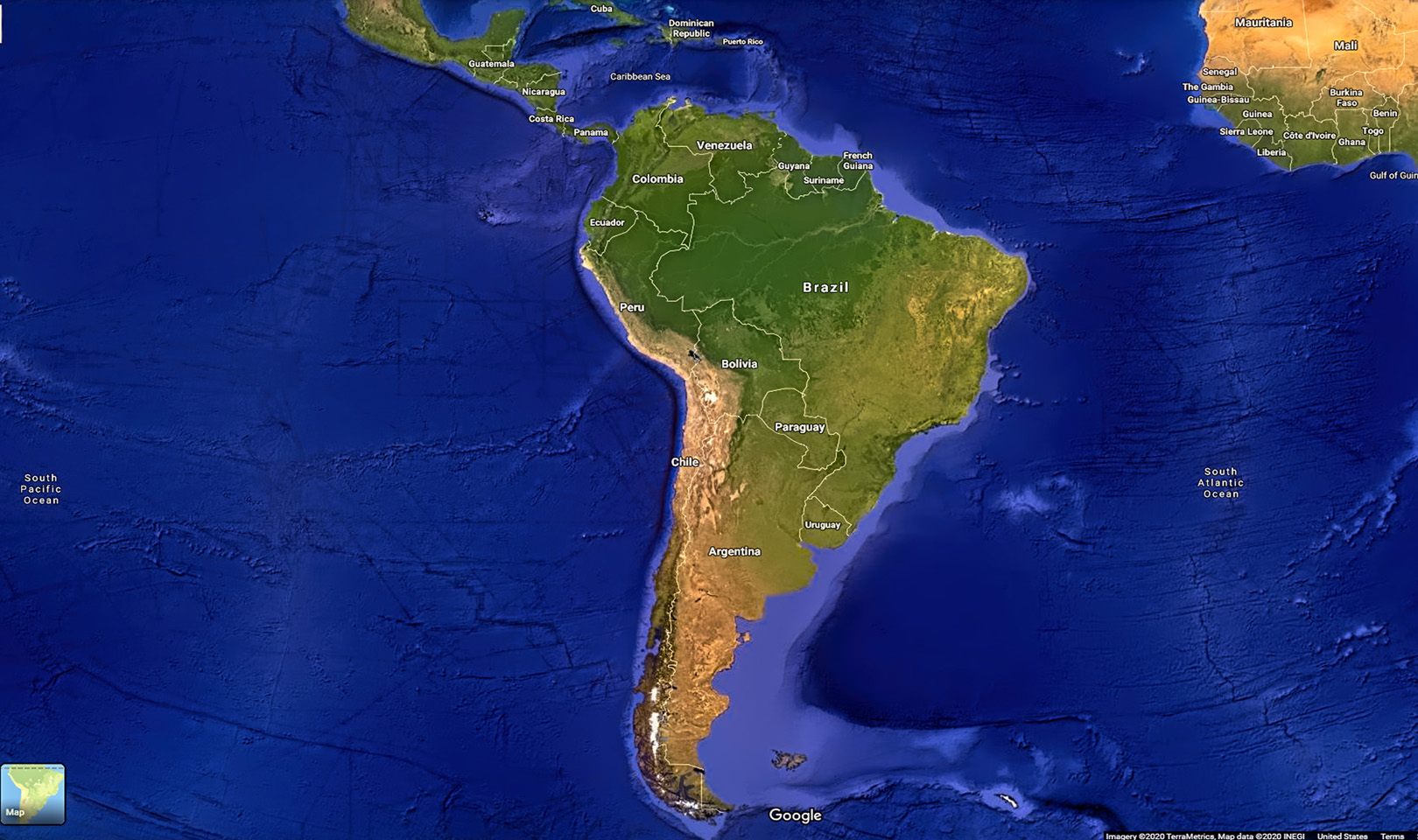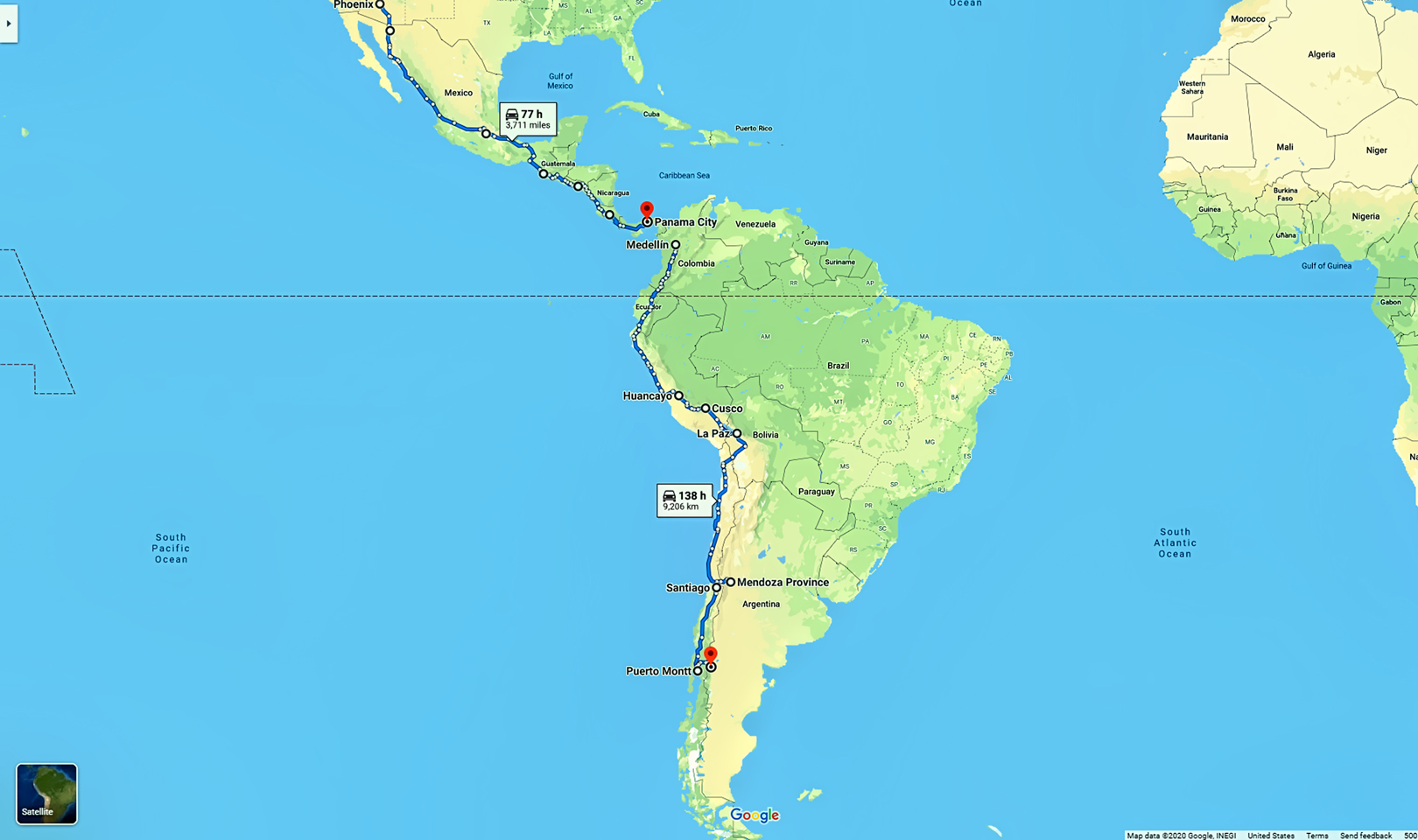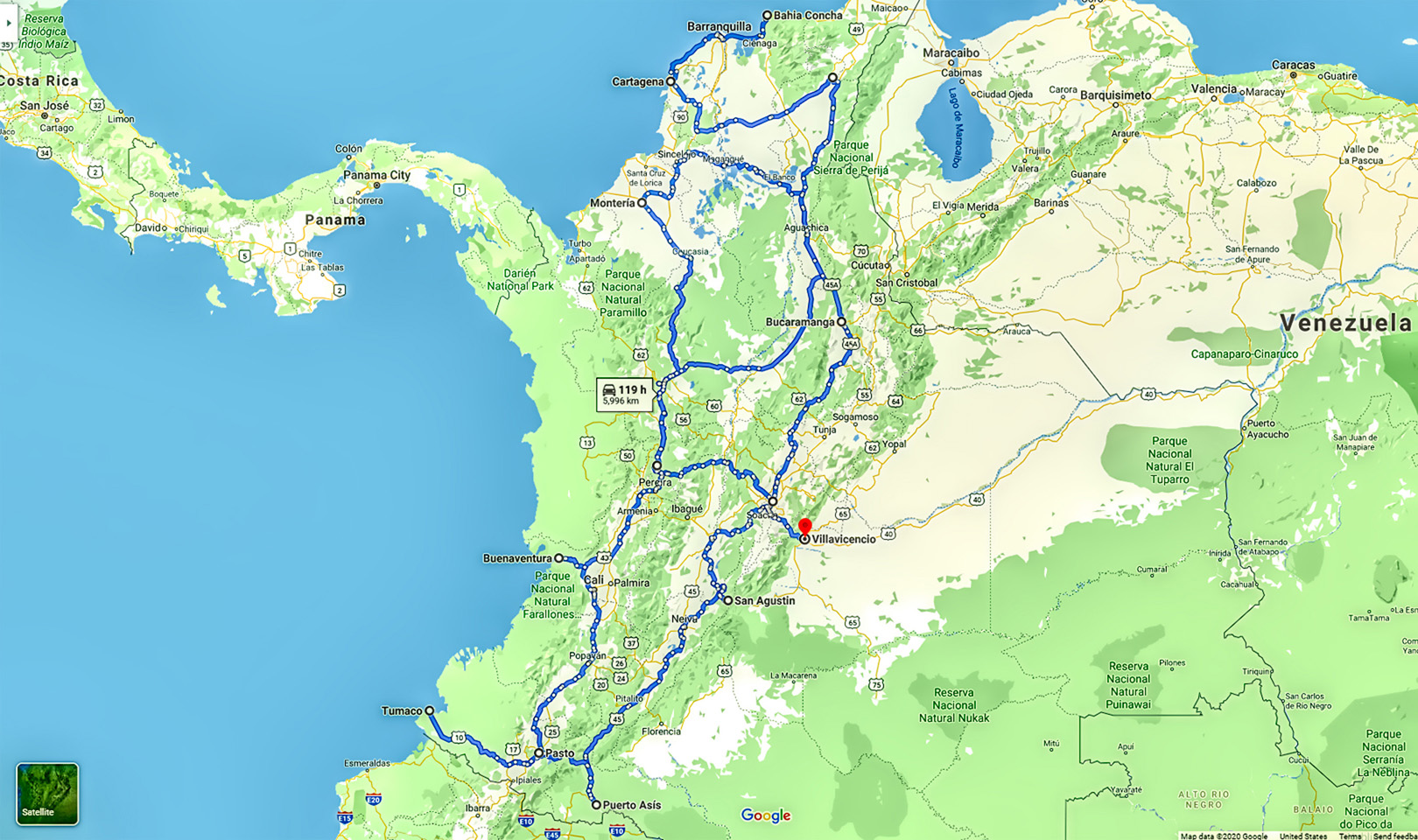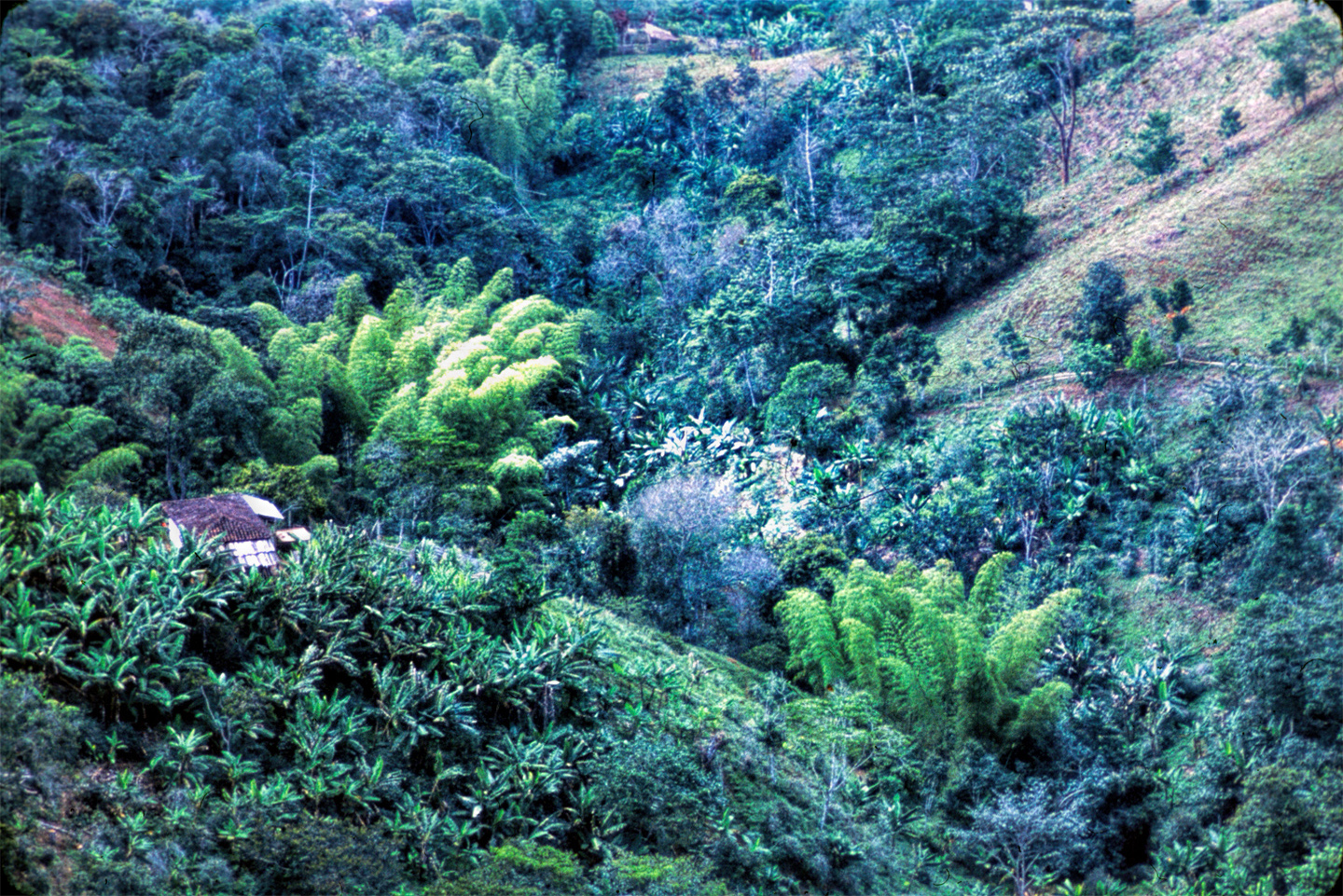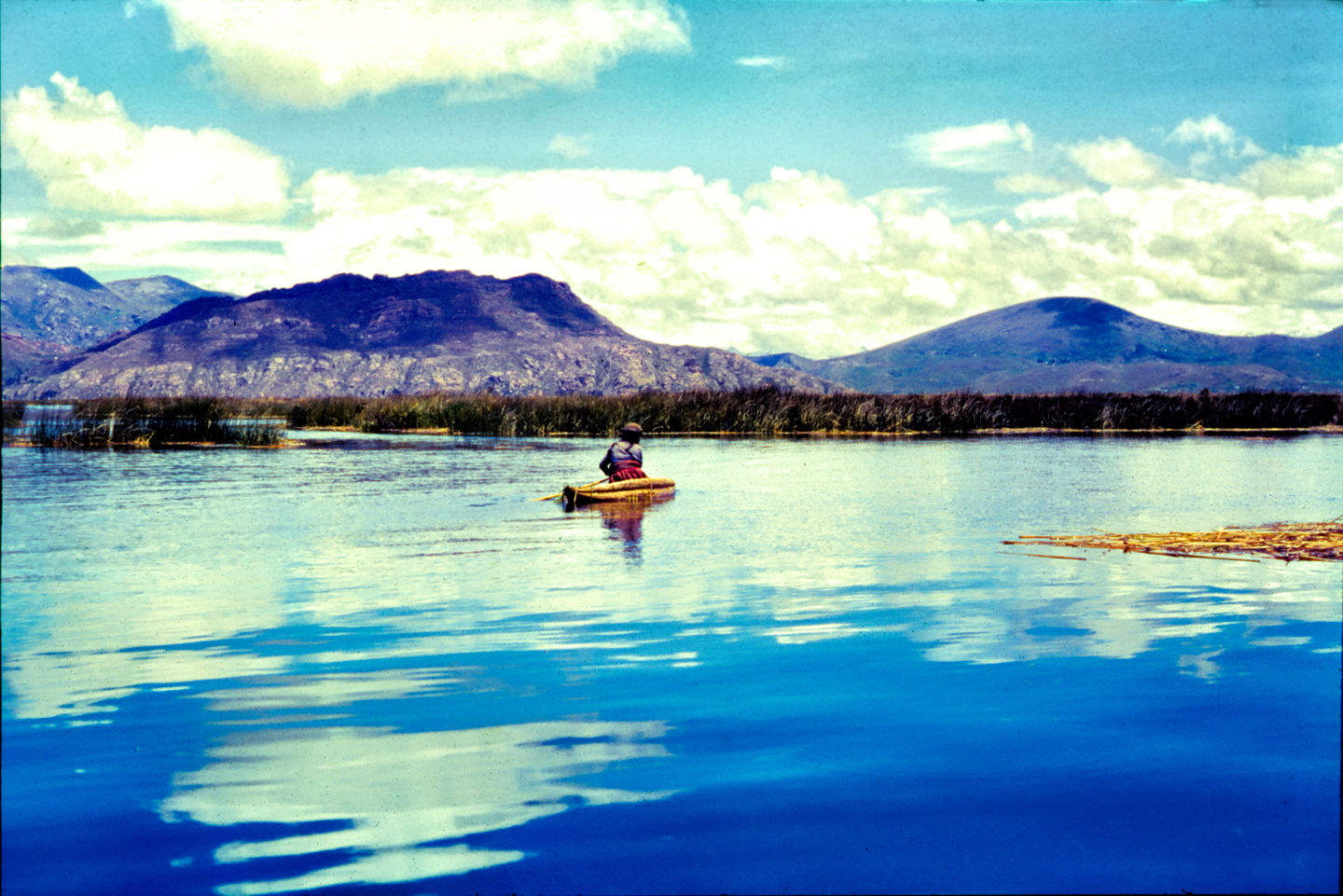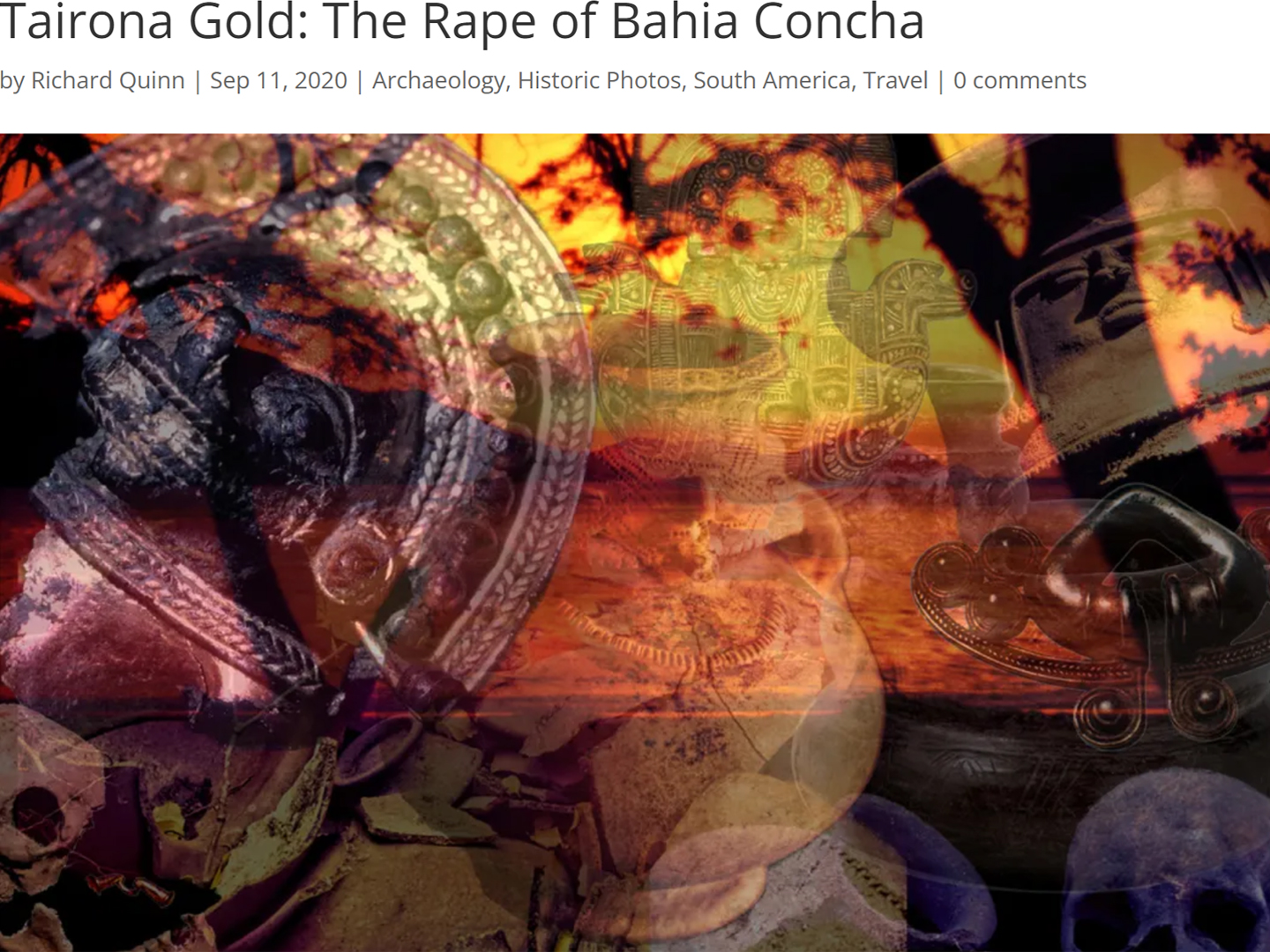South America
In 1970, more than half a century ago, I was a student at Antioch College in Ohio, majoring in anthropology. During the Winter Quarter of that year, I took three months off from my studies, and I hitch-hiked most of the way from my home in Phoenix to the end of the road in southern Chile. I won’t get into the details of what motivated me to do that, or what happened to me along the way. Suffice to say that the experience was transformative, and that it marked the beginning of an extraordinary South American adventure that kept right on going for most of the next five years.
I spent much of 1971 working and studying in Colombia, traveling around that country on dilapidated buses and trains, thinking all the while that there just had to be a better way. In the spring of 1972, I returned to Ohio to finish school, and while I was there, I purchased a three year old Dodge Powerwagon, the original four-wheel drive pickup truck, with an empty shell camper on the back. I outfitted the camper with beds and cabinets, stocked the truck with tools, spare parts, and camping gear, then made my way to Houston, where I loaded the whole business on a ship bound for Cartagena. That solved my transportation problem, and launched a whole new phase to my South American adventures. During the years that followed, I drove nearly every road in the northern Andes, one road trip after another through some of the most extraordinary countryside on the planet.
Considering all the time that has passed, and all the dramatic changes that have taken place, particularly in Colombia, my posts in this section of the website won’t follow the same pattern as the rest. I won’t provide any travel advice, no information about the state of the roads, no warnings about places or situations best avoided. Instead, I’ll be telling some tales from my personal archives: stories about the way things used to be, complete with dangerous characters, trackless jungles, and buried gold! These posts will be a cross between a blog and an old man’s memoir, complete with photographs, just to prove it really happened!
There’s also a section that might best be labeled “Popular Archaeology,” where I got a little carried away, extemporizing on topics that interest me personally. (One major advantage to a blog: you get to write whatever the heck you want!)
Like everything else on this site, it’s a work in progress, so, check back for updates.
Click any photo in the slide show below to display the images full screen, with captions.
Recuerdos of South America
This is an interactive Table of Contents. Click the pictures to open the pages.
Long Ago and Far Away: South America in the Early 1970’s
Portraits of a People, Lost in Time
50 year old portraits of Andean natives in their traditional dress, taken in mountain villages not yet tainted by outside influences.
Puno Day Festival
Historic photos of Peru’s Puno Day festival, taken in 1971. Included is the reenactment of the birth of the Inca empire on the shore of Lake Titicaca, with costumed dancers lining the streets of Puno.
Chinchero: The Place Where Rainbows are Born
Candid portraits of villagers in traditional dress, taken in Chinchero, Peru in 1971, before the outside world intruded.
An Overabundance of Bowlers: A Brief History of Headgear on the High Plateau
Andean natives have adapted to the intensity of the high altitude sun by taking a very simple precaution: everyone, almost without exception, wears a hat when they venture outdoors. From infants to ancients, everyone covers their head with something, ranging from shawls to leather helmets to proper English bowlers.
In the Vale of the Stone Monkeys: Peril and Petroglyphs in the Colombian Jungle
El Manco was easy to spot; he had embraced his defining handicap, a right arm that had been severed above the elbow, and that wasn’t even his only problem. He was also missing his right eye, nothing there but an empty socket and an ugly knot of scar tissue. “Tough old bird” doesn’t begin to describe a hardscrabble character like Manco; he had a face with creases like a roadmap straight to his own personal version of hell.
Tairona Gold: The Rape of Bahia Concha
It was the Tairona gold that triggered a blood lust in the Spanish invaders, ultimately causing the destruction of the entire Tairona civilization. That cycle was repeated in modern times, when the lust for Tairona gold infected the guaqueros, causing the destruction of the last refuge of the Tairona ancestors, in one final humiliation, one last indignity: the RAPE of Bahia Concha!
Tairona Gold: The Curse of the Coiled Serpent
Paul dug with his hands then, finally sticking his arm into a hollow space, pulling out a dark object. Grinning at me from the bottom of his hole, he handed up what he’d found. A round blackware vessel representing a coiled serpent, open in the middle, with a spout at the top of the head. I’d seen a lot of Tairona artifacts, but I’d never seen anything remotely like that one.
This is an interactive Table of Contents. Click the pictures to open the pages.
South America Before the Conquistadores
Tumaco: Atrocity Tops Antiquity on the Coast of Colombia
Within a matter of a few years, every readily accessible site had been looted and stripped of artifacts. There were laws in Ecuador prohibiting trade in antiquities, but during the 1970’s, there was no such law in Colombia, so the Tumaco heritage, extraordinary in its complexity, was scattered to the four winds.
<<CLICK to Read More>>
Tumaco: From Out of the Flood
Far more common than the precious metal were the artifacts made of clay, small, often elaborate figurines depicting nearly every aspect of the people’s daily lives, as well as their animistic mythology. It is through those figurines, some intact, but most in fragments, that these all but forgotten people have come to be known.
<<CLICK to Read More>>
Tumaco: A Cultural Crossroads
Traders coming down from the north had to endure many days of difficult travel along a coast that’s tough to negotiate even today. The reward must have been worth the trouble, because men from the Yucatan did, in fact, make that journey, trading goods, as well as ideas with the men of Tumaco.
<<CLICK to Read More>>
Tumaco: The Arhuaco Connection
What we really know of history is like an ancient tapestry, worn, and threadbare, with missing patches confusing the grand design. When we make a new connection, we restore a missing thread, and little by little, thread by thread, we fill in those troublesome blanks.
<<CLICK to Read More>>
Tumaco: Snarling Beasts and Raging Demons
There was so much ancient pottery in the Tumaco area that it literally washed up out of the ground after every big rain. With so many men out there looking for gold, it was impossible NOT to find Tumacan ceramics. Strange figurines and fragmented sculptures, unlike anything that had been found before, anywhere else in Colombia.
<<CLICK to Read More>>
There’s nothing like a good road trip. Whether you’re flying solo or with your family, on a motorcycle or in an RV, across your state or across the country, the important thing is that you’re out there, away from your town, your work, your routine, meeting new people, seeing new sights, building the best kind of memories while living your life to the fullest.
Are you a veteran road tripper who loves grand vistas, or someone who’s never done it, but would love to try? Either way, you should consider making the Southwestern U.S. the scene of your own next adventure.
